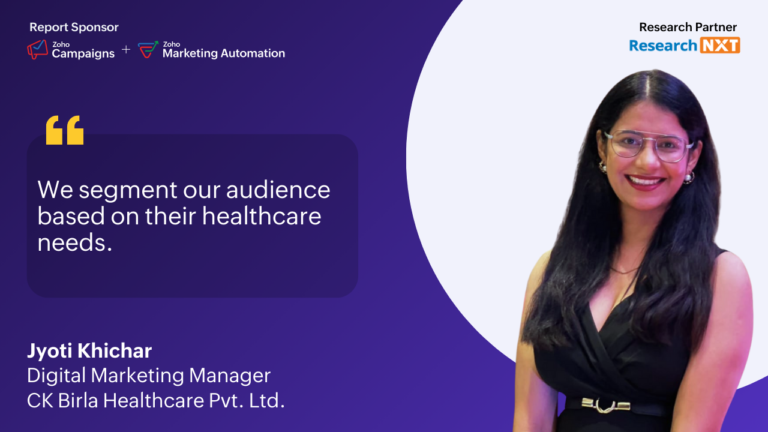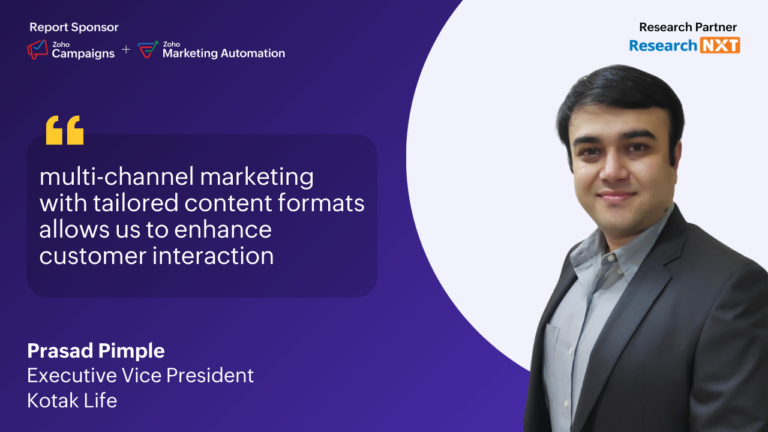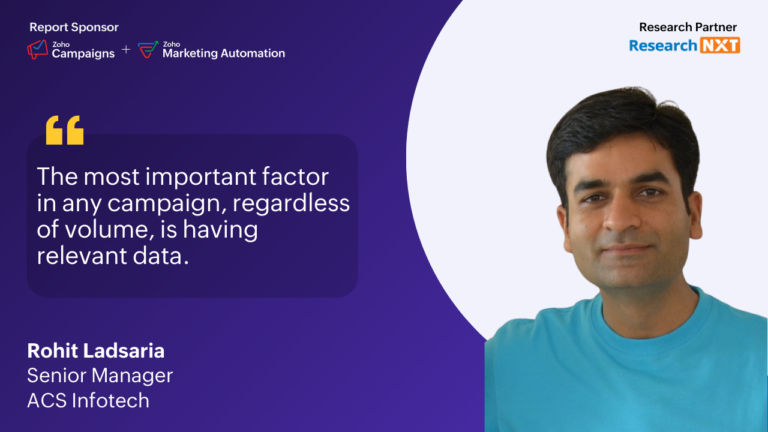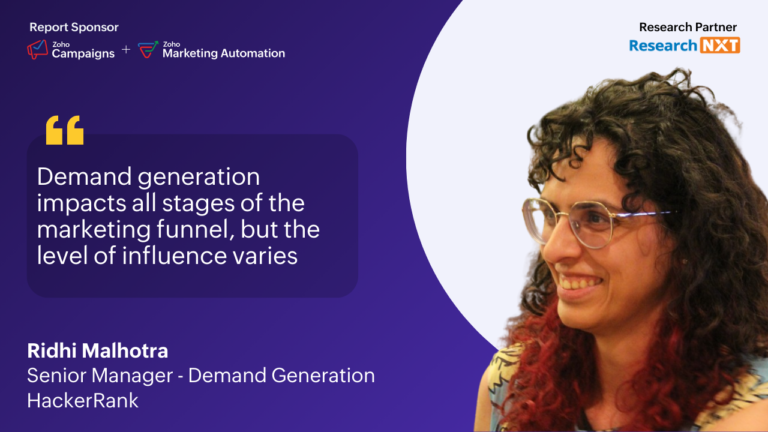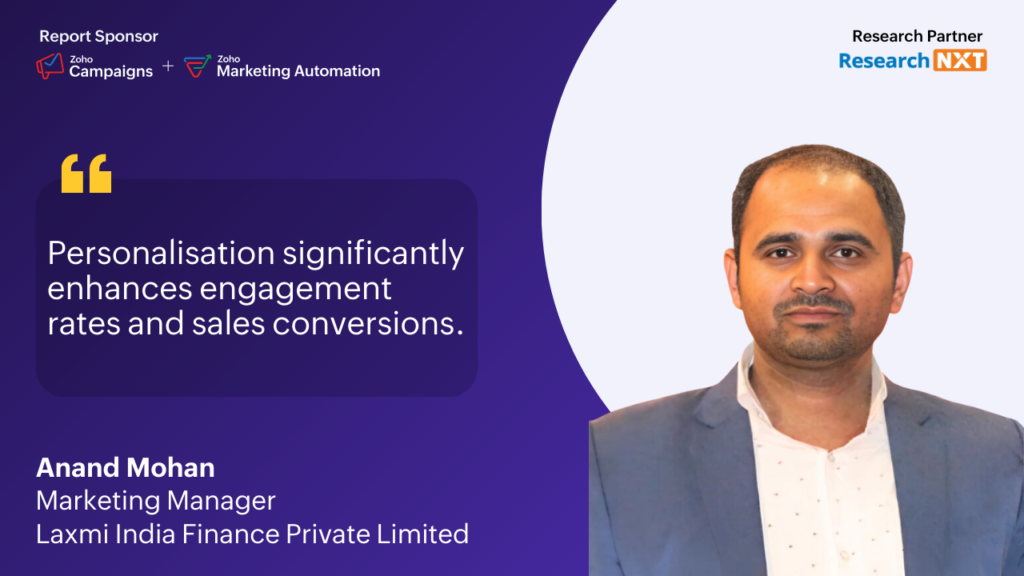
From Traditional Marketing to Automation: Navigating Digital Strategies in the Financial Sector
In this interview with Research NXT, Anand Mohan, Marketing Manager at Laxmi India Finance, offers insights into his professional journey, highlighting how personal experiences shaped a career in digital marketing. The conversation delves into strategies used for customer acquisition, engagement, and compliance, emphasising the role of automation and personalisation in improving customer experiences.
Key Takeaways:
- Tools like customised CRM, chatbots, and Smartping messaging services streamline lead management, customer engagement, and campaign execution.
- Personalising messages using customers’ full names and segmentation strategies has led to increased engagement and conversion rates.
- To maintain compliance, opt-in and opt-out processes are in place, and customer feedback, including video testimonials, is used to optimise the customer journey.
- The effectiveness of campaigns is measured using KPIs like Click-Through Rates (CTR) and conversion rates, ensuring a data-driven approach to refining marketing strategies.
"We always use the full names of customers/leads while sending promotional or service messages. This helps us build more trust in our brand."
Could you share a brief overview of your professional journey, which led you to your current position as Marketing Manager at Laxmi India Finance?
I come from Bihar, where government jobs are often considered the ultimate goal due to the promise of job security. For most students in Bihar, the pursuit of a stable career is their primary focus, with nearly 99% driven by the need for job security above all else. I, too, chased that dream, but luck was not in my favour.
I moved to Noida and joined an MNC as an Admin Executive, where I learned marketing. Later, I joined an IT company, promoting products both online and offline while pursuing an MBA (Marketing) at Sikkim Manipal University. During COVID-19, I worked with a solar light company, publishing local directories in Bihar to promote tourism and selling solar lights to government bodies. I also managed an election campaign for a friend. Eventually, I joined Laxmi India Finance as a marketing manager to help people access loans during tough times.
What are your primary responsibilities in your current role, and how have these responsibilities evolved since you joined the organisation?
As a marketing manager, my primary role is developing and executing marketing strategies to promote our services, such as Loan products and Laxmi Mitra Applications.
Some of the highlights are given below.
- Creating comprehensive marketing plans to target specific customer segments.
- Overseeing marketing campaigns across various channels, including digital, print, and social media, to enhance brand visibility and drive customer engagement.
- Analysing market trends and customer insights to inform product development and marketing initiatives.
- Leading and mentoring my team, ensuring effective collaboration and skill development.
- Managing the marketing budget to optimise spending and maximise return on investment.
- Tracking and analysing the performance of marketing campaigns to refine strategies and improve outcomes.
- Working closely with the sales and product development team to ensure cohesive messaging and branding.
Read More
How do you incorporate automation into your marketing strategies? Which processes have you automated, and how has it impacted efficiency and engagement?
We are using many automation tools to automate our process, like our customised CRM application, which helps us monitor the lead journey from scratch until disbursement in a single place.
In addition, we have enabled Chatbot and Google Chat services for our customers, where they can connect with our customer services experts.
Which tools or platforms do you use for automating repetitive tasks like SMS campaigns or audience segmentation?
We are using Smartping messaging services to send regular campaigns on segmented data.
How important are WhatsApp and SMS campaigns in reaching and engaging customers? What types of messages do you send through these channels, and how effective have they been for lead generation and customer communication?
SMS and WhatsApp campaigns offer a range of benefits that enhance customer engagement and communication. SMS boasts high open rates of around 98%, ensuring immediate visibility, while its simplicity and direct nature facilitate concise messaging and prompt responses.
On the other hand, WhatsApp supports rich media sharing, enabling interactive two-way communication and personalised engagement. Both platforms allow for targeted messaging, effectively reach audiences, and are cost-effective compared to traditional marketing methods. Together, they provide businesses with powerful tools to connect with customers and drive conversions.
How do you handle consent and ensure compliance when using these platforms?
To handle consent and ensure compliance when using SMS and WhatsApp campaigns, it’s essential to implement a clear opt-in mechanism where users voluntarily provide their phone numbers and agree to receive messages. In addition, we are providing easy opt-out options, like replying “STOP,” if anyone does not want to receive our WhatsApp messages.
How do you use personalisation in your marketing campaigns to enhance customer trust and engagement?
We always use the full names of Customers/Leads while sending promotional or service messages. This helps us build more trust in our brand.
Can you describe the impact personalisation has had on engagement rates and sales conversions?
Personalisation significantly enhances engagement rates and sales conversions by creating a more tailored and relevant customer experience. When messages and offers are customised based on user preferences, behaviours, and demographics, recipients are more likely to feel valued and understood, leading to increased interaction. Personalised content—such as targeted promotions, product recommendations, or tailored communications—can result in higher open and click-through rates, as customers are more inclined to engage with content that resonates with their interests.
How do you ensure the customer journey—from awareness to loan approval—is smooth and efficient? How do you use customer feedback to improve this journey, and what tools or methods have proven most helpful in optimising it?
We collect data from the market by visiting or installing Canopy. Then, we send promotional messages, and later, we call back on responses received. During the Call, we create potential leads, and when they are disbursed, we take video feedback from customers.
How do you measure the success of your marketing campaigns? What KPIs do you use to assess the effectiveness of your digital marketing campaigns?
When we launch any online or offline campaign, we monitor its duration and response time. We receive a real-time response on a dedicated channel from a segmented campaign, calculate the manpower involved in the particular campaign, and calculate the total response received along with conversions. We often use the Click-Through Rate (CTR) method to check the percentage of people who clicked on a given link in SMS, WhatsApp, and Facebook posts.
The financial industry is highly regulated, and regulatory changes can impact marketing practices. How do you adapt your marketing strategies to ensure compliance while still being creative and engaging with your campaigns?
We often meet with the compliance team to determine if any regulatory instructions have been issued for us. Then, we think about remedies and implement them. I can’t explain the examples of changes I made due to company policy.
Before we wrap up, we want to know your expectations from this report. What do you think would be most valuable for the readers of the report?
I think every case study and opinion matters. As we know, if two people have 1 rupee and exchange it, both of them still have only 1 rupee in their hand. But if two people have any idea and exchange their ideas, then both of them will have 2 different ideas in their minds. So, it’s always helpful to organise such events and seminars where people from the same or different industries can participate to gain experience about any challenges whose solutions have already been found by someone else whom I don’t know.
Aside from this, no one has enough time to make all the mistakes themselves, so always try to learn from others’ mistakes. It also helps you to save your precious time and money.

